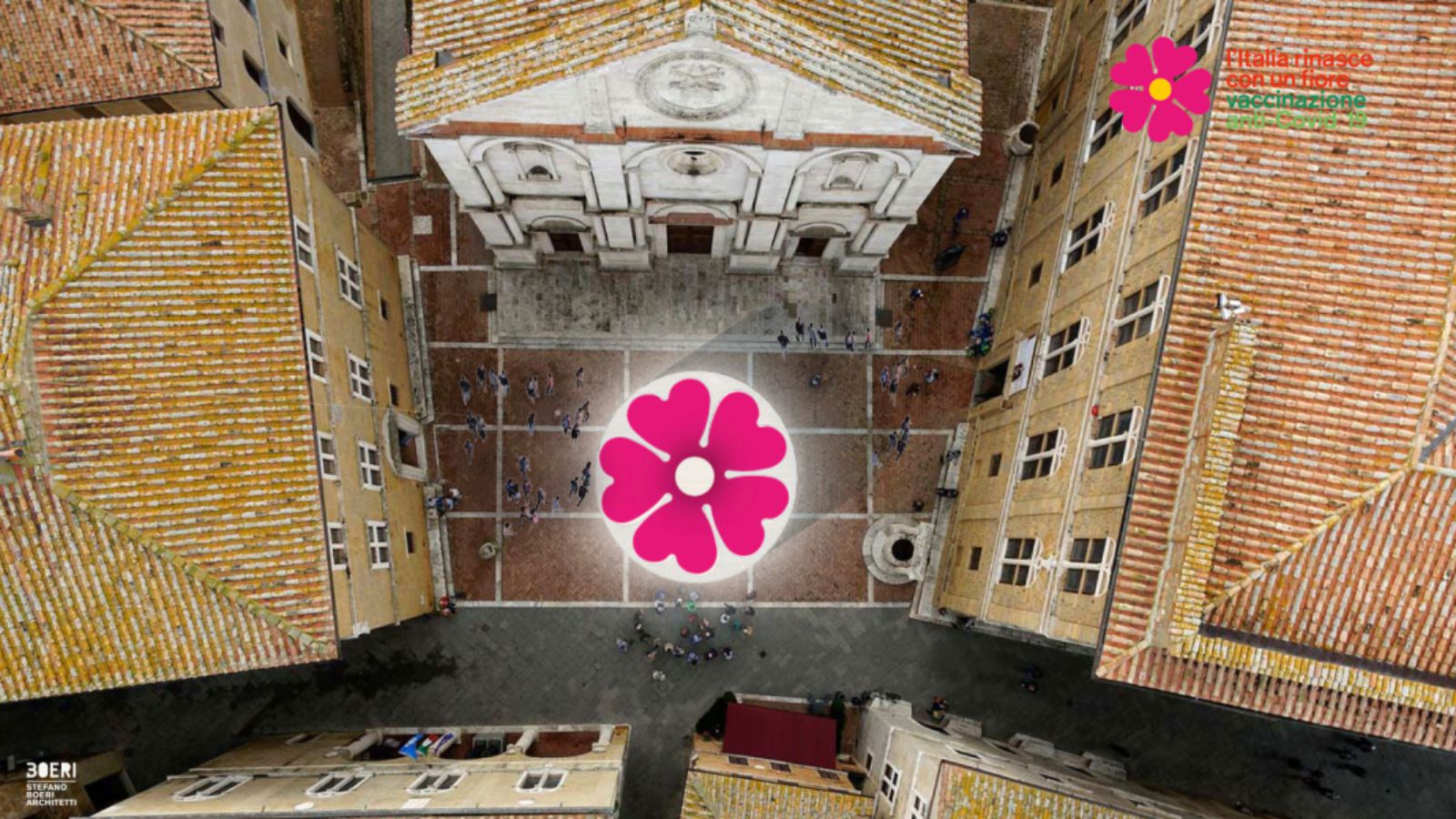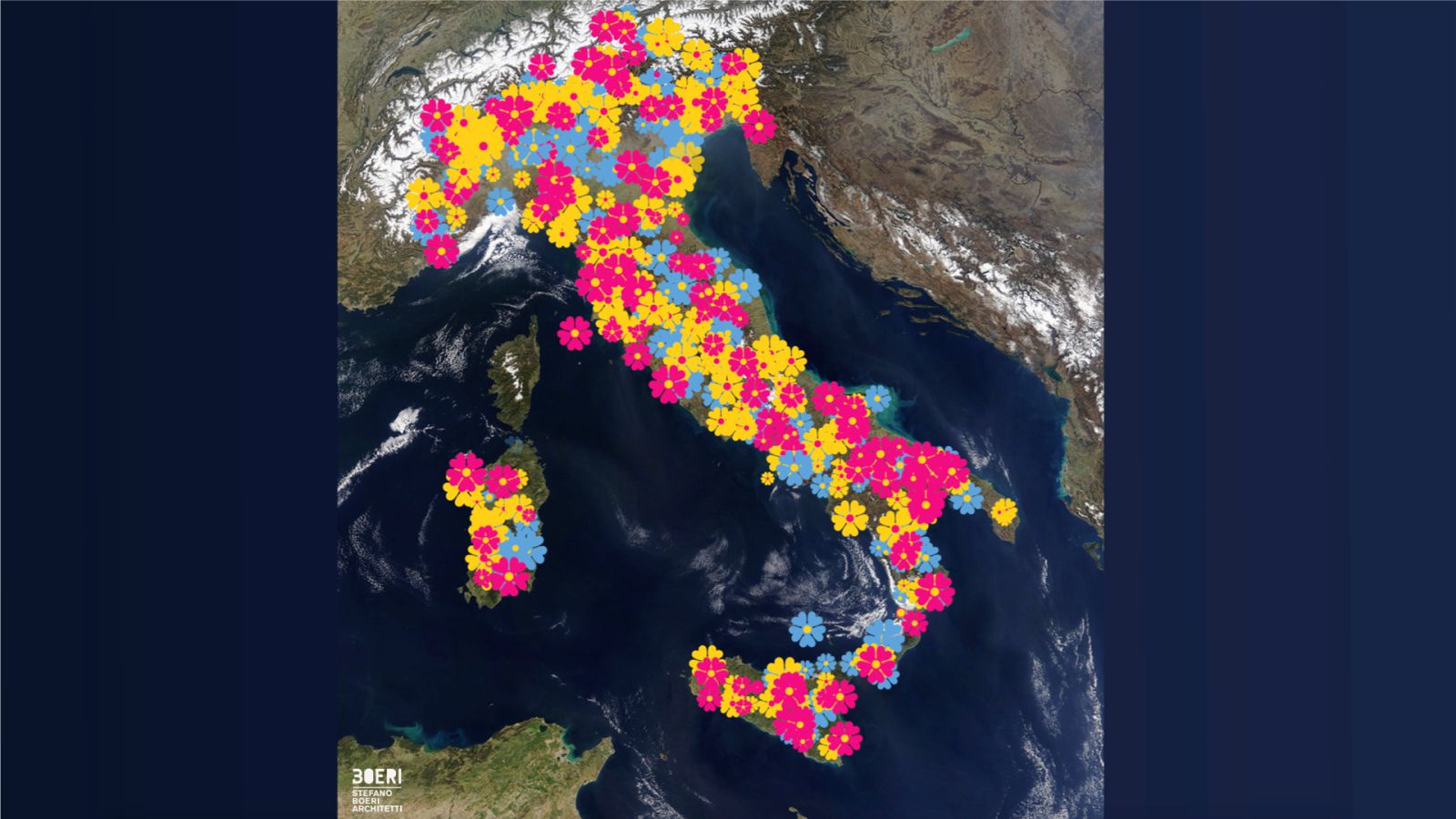At the request of the Italian Special Commissioner for the Covid-19 emergency, Domenico Arcuri, the architect Stefano Boeri – together with a team of consultants and free of charge – has conceived and developed the architectural and communicative concept behind the anti-Covid-19 vaccination campaign. The integrated proposal includes three elements: the campaign logo in its various forms; the design for the temporary pavilions to be used for administrating the vaccine in the main Italian squares; and a mobile information totem to be set up in public places.
Stefano Boeri: “With the image of a springtime flower, we wanted to create an architecture that would convey a symbol of serenity and regeneration. Getting vaccinated will be an act of civic responsibility, love for others and the rediscovery of life. If this virus has locked us up in hospitals and homes, the vaccine will bring us back into contact with life and the nature that surrounds us”.
The flower
Boeri’s proposal, whose general outlines have been approved and which is now being finalised, associates the vaccination campaign with a flower, an icon not only of the tremendous biodiversity found throughout Italy but also a symbol of the natural cycle of life and continuous rebirth. The inspirational flower behind the concept is the Primrose, the first to blossom after the long winter and announce the re-awakening of Nature and the arrival of Spring.
This flower is the element that will link every aspect of the campaign since it shares the same circular pattern as the layout of the pavilions that will be erected in Italy’s squares and public spaces. It will be clearly visible from above as large versions of it will be printed on the pavilion roofs, side walls and information totems.
This flower is the element that will link every aspect of the campaign since it shares the same circular pattern as the layout of the pavilions that will be erected in Italy’s squares and public spaces. It will be clearly visible from above as large versions of it will be printed on the pavilion roofs, side walls and information totems. Italy’s squares will then visually blossom with a flower. The pay-off for the identity campaign is inspired by this element: “With a flower, Italy comes back to life”.
The timber-framed and fabric pavilion
The circular structure of the pavilion – that can be easily dismantled and re-assembled – will rest on a prefabricated wooden base which will also be used for supporting the various systems in the internal rooms. The supporting frame will be made of structural wood. The external cover will be made from textiles featuring a combination of different recyclable and natural biodegradable water-resistant materials.
The roof will house a system of photovoltaic panels designed to generate enough electricity to meet the needs of the entire pavilion. The partitions for the internal spaces will be created using prefabricated textile systems notable for their light weight, flexibility, sound absorption and transparency. The organization of the interior spaces of the pavilion include both the spaces necessary for the administration of the vaccine and those for acceptance and waiting after vaccination.
The central core of the circle is designed to house service areas for operators (administration, storage, changing rooms, dedicated toilets, etc.). The same elements in the layout of the pavilions will also be found in the administration points identified within existing structures. Source by Stefano Boeri Architetti.
- Location: Italy
- Architect: Stefano Boeri Architetti
- Coordination: Maria Chiara Pastore
- Planning/design team: Francesca Cesa Bianchi, Giorgio Donà, Marco Giorgio, Jacopo Abbate, Pietro Chiodi, Maria Lucrezia De Marco, Federico Godino, Anastasia Kucherova, Simone Marchetti and Martina Mitrovic
- Graphic design: anchora, Mario Piazza
- Materials and technologies: Ingrid Paoletti
- Energy supply and installations: Niccolò Aste
- Year: 2020
- Images: Courtesy of Stefano Boeri Architectti








